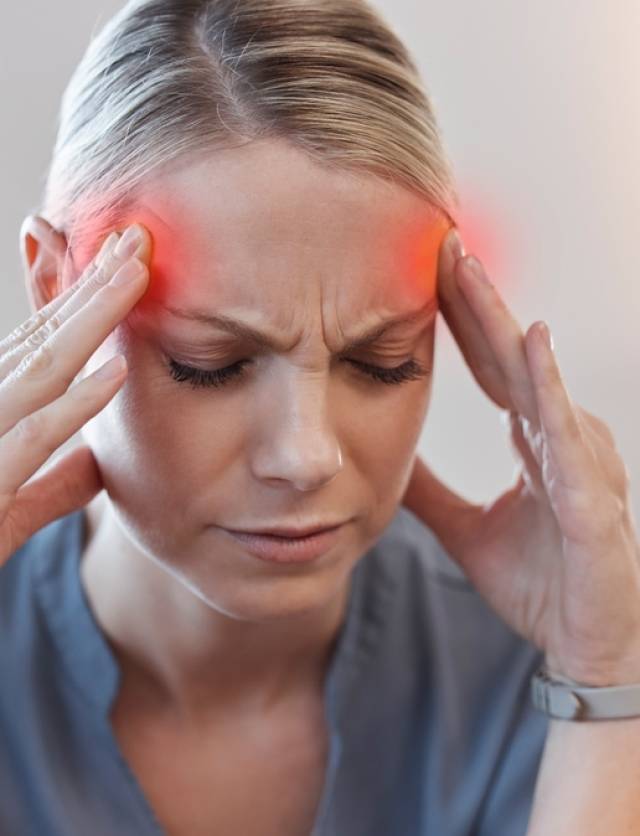Head and Facial
Head and facial pain can stem from a variety of underlying causes, including muscle tension, joint disorders, nerve-related conditions, infections, post-surgical pain, and more. At Cellara Pain Institute, we provide comprehensive care for a wide range of head and facial pain conditions.

What is Trigeminal Neuralgia?
Trigeminal neuralgia is a chronic pain condition characterized by sudden, intense, and burning sensations, typically on one side of the face. It most commonly affects women over the age of 50, though it can occasionally impact both sides of the face. The condition involves the trigeminal nerve, which has three branches responsible for transmitting sensory information from the upper, middle, and lower regions of the face, including the oral cavity. Trigeminal neuralgia may affect one or multiple branches of this nerve.
Signs And Symptoms Of Trigeminal Neuralgia
The pain caused by trigeminal neuralgia can be sudden, severe, and feel like sharp, stabbing sensations in the head or face. Everyday activities such as brushing your teeth, talking, or even light facial vibrations can trigger or worsen the pain. While TN is not life-threatening, its intensity can be debilitating—often leading individuals to withdraw from daily routines or social interactions due to the fear of triggering pain.
Signs And Symptoms Of Trigeminal Neuralgia
Trigeminal neuralgia pain can occur suddenly and feel intensely sharp—often described as stabbing or electric shock-like sensations in the head or face. Simple, everyday actions like talking, brushing your teeth, or even a light breeze or touch can trigger or intensify the pain. While not life-threatening, the severity of TN can be profoundly disabling, leading some individuals to avoid daily activities or social situations altogether.
Trigeminal Neuralgia Treatment Options at Cellara Pain Institute
At Cellara Pain Institute, we offer a range of advanced treatment options for managing trigeminal neuralgia. Depending on the severity and nature of your condition, treatment may include medication or interventional procedures designed to reduce or block pain signals.
Our specialized treatments include:
Trigeminal Nerve Block
This targeted procedure involves injecting a local anesthetic to block pain signals traveling through the trigeminal nerve, offering relief from facial pain.Botox Injections
Botox is strategically injected into specific areas to help prevent migraines and reduce facial pain by relaxing overactive muscles and interrupting pain pathways.Sphenopalatine Ganglion (SPG) Block
A numbing medication is delivered near the Sphenopalatine Ganglion, a cluster of nerves linked to facial pain and headaches, to help relieve discomfort.Trigeminal Nerve Radiofrequency Ablation
Using a specialized device, the affected nerve fibers are gently heated to disrupt their ability to transmit pain signals, providing long-term pain relief.
Head and Facial Pain Due to Migraines
Understanding Migraines
Migraines are a type of headache that can cause intense, throbbing pain, typically on one side of the head. These episodes are often accompanied by symptoms such as nausea, vomiting, and heightened sensitivity to light, sound, or smells. Migraine attacks can last anywhere from a few hours to several days, significantly impacting daily life and productivity.
Migraines are believed to begin when overactive nerve cells send signals that stimulate the trigeminal nerve, which provides sensation to the face and head. This activation prompts the release of chemicals like serotonin and calcitonin gene-related peptide (CGRP), leading to inflammation and the pain associated with migraines.

What can trigger migraines?
Migraine attacks often begin gradually and can last approximately 4 hours, though more severe episodes may persist for over 72 hours. Several factors can increase your likelihood of developing migraines, including age, gender, family history, and certain underlying health conditions such as depression, anxiety, bipolar disorder, sleep disturbances, and epilepsy. Migraines commonly begin between the ages of 10 and 40, and statistically, women are three times more likely to experience them than men.
While sleep and caffeine can be part of migraine management, changes in your usual patterns—either too much or too little—can act as triggers. Additional external triggers may include:
Shifts in weather, such as storm fronts or barometric pressure changes
Strong winds or altitude changes
Loud noises, bright lights, or strong smells
Physical exertion or sexual activity
Certain medications that dilate blood vessels
How to Prevent Migraines
As previously noted, migraines are often triggered by specific events or factors. Identifying and avoiding these triggers is the first step in preventing future migraines. Stress, in particular, is a major contributor and trigger for many individuals. Incorporating relaxation techniques such as meditation, yoga, mindful breathing, staying well-hydrated, and maintaining a regular exercise routine can help manage stress levels and hormonal imbalances that may increase the likelihood of migraines.
Other factors that can contribute to or exacerbate migraines include:
Alcohol consumption or hangovers
Skipping meals or dietary imbalances
Disruptions in sleep patterns or inconsistent sleep schedules
Poor posture
Viral or bacterial infections
Dental issues or jaw misalignment
Underlying brain tumors
High blood pressure or risk of stroke
Understanding and managing these potential triggers can significantly reduce the frequency and severity of migraines.
How do I Manage Migraine Symptoms?
Many people can manage mild migraine symptoms at home by resting in a dark, quiet room with their eyes closed, applying a cold compress or ice pack to the forehead, and staying well-hydrated. Over-the-counter medications—such as acetaminophen, aspirin, ibuprofen, or caffeine-containing remedies—can also provide relief for some.
Primary care providers may recommend preventive medications, including anti-seizure drugs, beta-blockers, calcium channel blockers, antidepressants, or even Botox injections to help reduce the frequency and severity of migraines.
When home remedies and standard medications aren’t enough, the specialists at Cellara Pain Institute offer advanced, targeted treatments, including:
Sphenopalatine Ganglion (SPG) Block Injection
A numbing medication is delivered to the deep facial region around the sphenopalatine ganglion—a nerve cluster involved in headache pain.Botox Injections
Administered in specific areas of the head and neck, Botox helps prevent migraines by interrupting pain pathways before they begin.Epidural Blood Patch
Often used to treat headaches caused by spinal fluid leaks, this procedure involves injecting a small amount of your own blood into the epidural space to seal the leak and relieve pain.Trigeminal Nerve Block
An injection that targets the trigeminal nerve to block pain signals and reduce migraine-related facial pain.Trigeminal Nerve Radiofrequency Ablation
A minimally invasive procedure that uses controlled heat to disrupt pain signals along the trigeminal nerve for longer-term relief.
Head/Facial Pain at Cellara Pain Institute
Each of the treatment options available at Cellara Pain Institute can help alleviate migraine pain or prevent attacks from occurring. If you experience chronic migraines, you understand how significantly they can disrupt your daily life. Our experienced physicians are here to provide personalized, effective treatment solutions tailored to your specific lifestyle and pain management goals.
